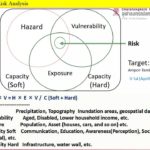http://disasters.weblike.jp/disasters/archives/2950
After the 1896 Meiji sanriku tsunami, many communities considered relocating to higher grounds, however, a few communities could proceed the relocations. The main reasons why they could not relocate to higher grounds are the followings (Nakasu et al., 2011):
1) It was very inconvenient for them to settle the areas which were far from the sea because they were mainly fishermen or living their daily lives by the sea.
2) Most of them were doing small size fishing related businesses, had not enough budgets to relocate.
3) There were difficulties to attain the agreements to do relocations among the community members.
4) They, community members, had conflicts with land owners to select and purchase the relocation lands.
5) There were technical limitations to create a land for living on the slope because Japan did not have enough technological level at that time.
They mainly relocated to higher grounds by their own decisions. However, some groups gave pressures on the people who had planned to move and tried to let them give up to do so because they would like to maintain the communities to recover.
A small number of the communities moved to higher grounds, however, some went back to their original places. In addition, their relatives or other village people started to live there. Some families positively accepted the immigrants from outsides to maintain their ownerships.
Finally, almost all communities had chosen to rebuild at the same places, so the risks were retained and this combined with the fact that they were re-affected by the 1933 Showa sanriku tsunami disaster.
Concerning after the 1933 Showa sanriku tsunami, this will be explained later.





